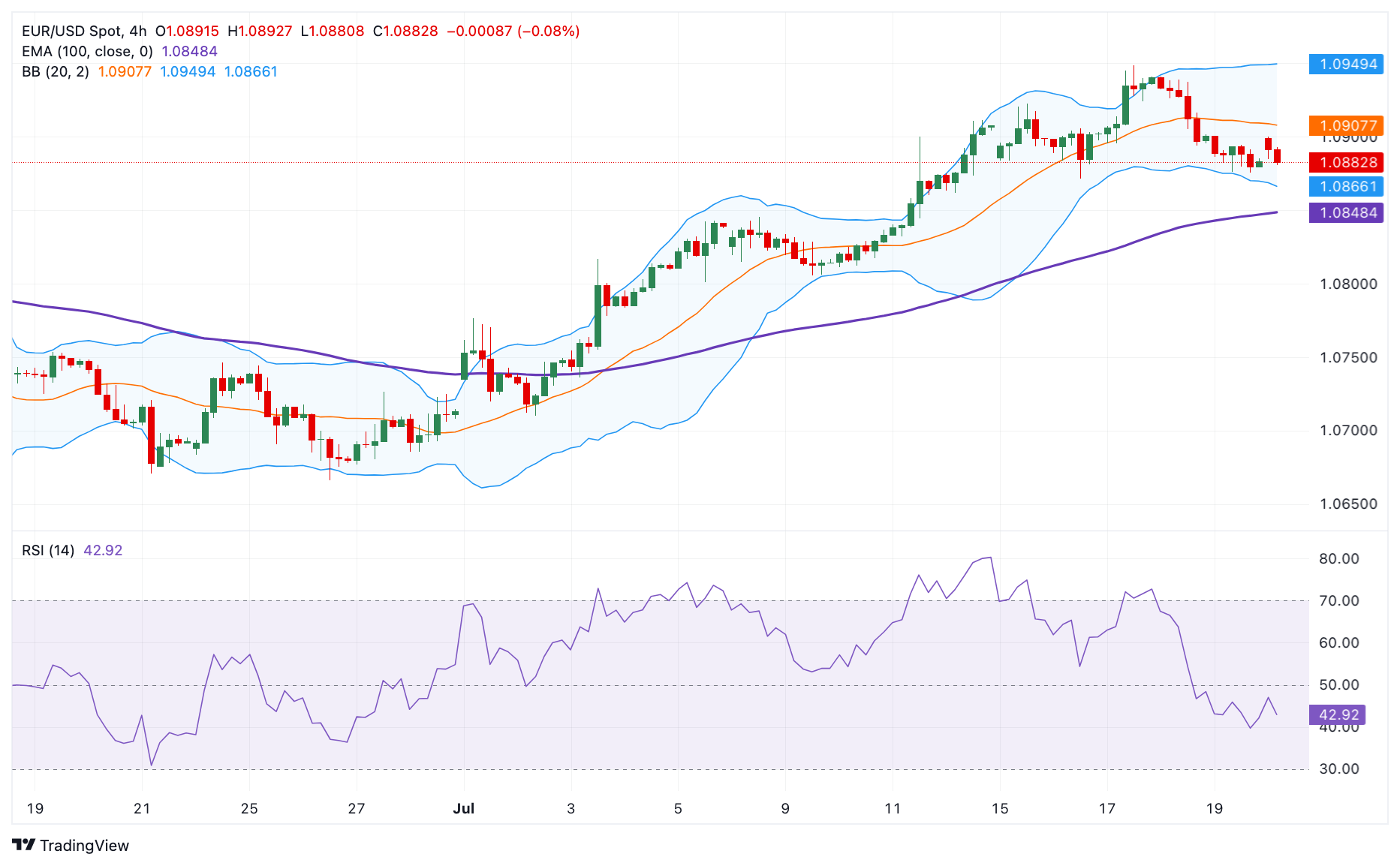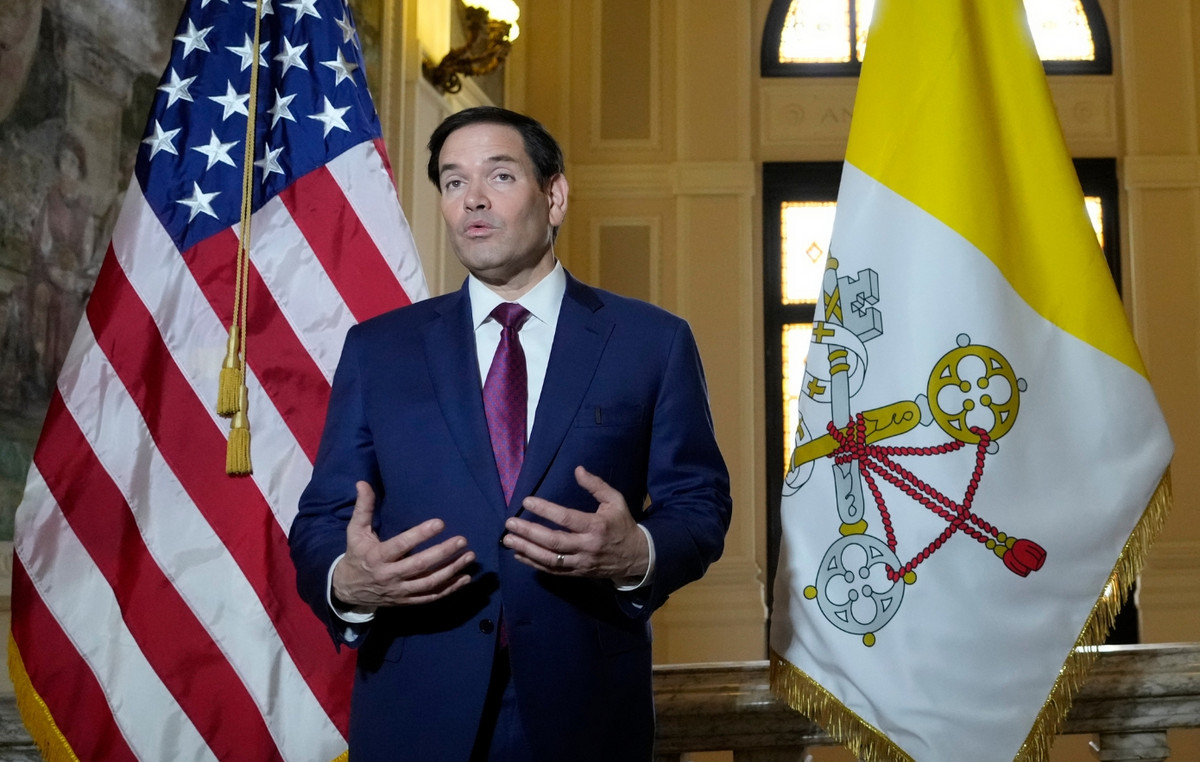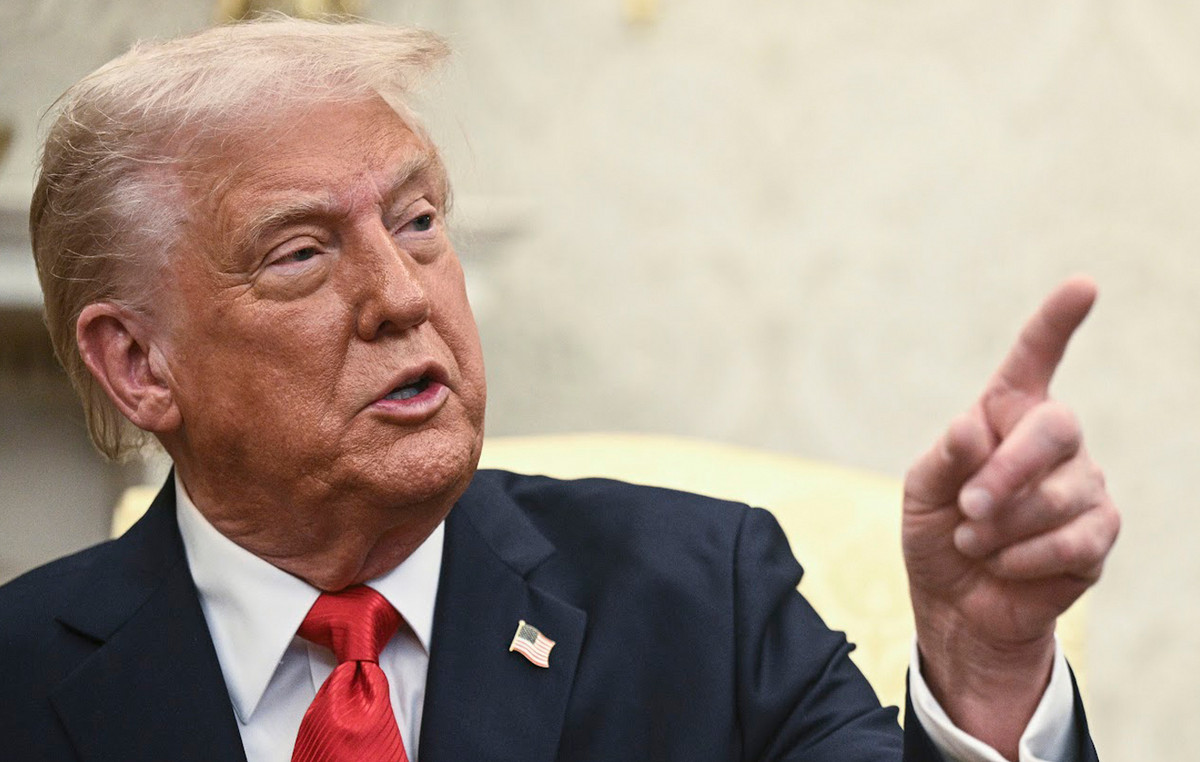- EUR/USD is trading on a stronger note around 1.0885 in the early European session on Monday.
- The pair maintains the bullish vibe above the 100-period EMA, but the RSI indicator remains in bearish territory.
- The first bearish target is seen at 1.0865; the immediate resistance level is located at 1.0900.
The EUR/USD pair is trading with modest gains near 1.0885 during the early European session on Monday. The European Central Bank (ECB) kept rates unchanged in July and maintained a data-dependent approach. ECB President Christine Lagarde reiterated that the central bank will maintain a restrictive policy stance as long as necessary to achieve the 2% inflation target.
On the 4-hour chart, the EUR/USD pair is holding an unchanged positive stance above the key 100-period exponential moving average (EMA). However, the Relative Strength Index (RSI) is in the bearish territory near 43.0, suggesting that further decline cannot be ruled out.
The initial support level for the major pair will emerge near the lower border of the Bollinger Band at 1.0865. Further south, the next contention level is located at 1.0850, the 100-period EMA. Any further selling below this level will see a drop to the psychological mark of 1.0800.
On the upside, a decisive break above the 1.0900 round figure will pave the way towards 1.0950, the upper boundary of the Bollinger Band. Extended gains will expose 1.0981, a high from March 8. The crucial resistance level to watch is the 1.1000 level.
EUR/USD 4-hour chart
Euro FAQs
The Euro is the currency of the 20 European Union countries that belong to the Eurozone. It is the second most traded currency in the world, behind the US Dollar. In 2022, it accounted for 31% of all foreign exchange transactions, with an average daily volume of over $2.2 trillion per day. EUR/USD is the most traded currency pair in the world, accounting for an estimated 30% of all transactions, followed by EUR/JPY (4%), EUR/GBP (3%) and EUR/AUD (2%).
The European Central Bank (ECB), based in Frankfurt, Germany, is the reserve bank of the Eurozone. The ECB sets interest rates and manages monetary policy. The ECB’s main mandate is to maintain price stability, which means controlling inflation or stimulating growth. Its main instrument is to raise or lower interest rates. Relatively high interest rates – or the expectation of higher rates – generally benefit the Euro and vice versa. The Governing Council of the ECB takes monetary policy decisions at meetings held eight times a year. Decisions are taken by the heads of the national banks of the Eurozone and six permanent members, including ECB President Christine Lagarde.
Eurozone inflation data, as measured by the Harmonised Index of Consumer Prices (HICP), is an important econometric data point for the euro. If inflation rises more than expected, especially if it exceeds the ECB’s 2% target, the ECB is forced to raise interest rates to bring inflation back under control. Relatively high interest rates compared to their peers usually benefit the euro, as it makes the region more attractive as a place for global investors to park their money.
Data releases measure the health of the economy and can influence the Euro. Indicators such as GDP, manufacturing and services PMIs, employment and consumer sentiment surveys can influence the direction of the single currency. A strong economy is good for the Euro. Not only does it attract more foreign investment, but it can encourage the ECB to raise interest rates, which will directly strengthen the Euro. Conversely, if economic data is weak, the Euro is likely to fall. Economic data from the four largest Eurozone economies (Germany, France, Italy and Spain) are especially significant, as they account for 75% of the Eurozone economy.
Another important output for the euro is the trade balance. This indicator measures the difference between what a country earns from its exports and what it spends on imports during a given period. If a country produces highly sought-after export products, its currency will appreciate due to the additional demand created by foreign buyers who wish to purchase these goods. Therefore, a positive net trade balance strengthens a currency and vice versa for a negative balance.
Source: Fx Street
I am Joshua Winder, a senior-level journalist and editor at World Stock Market. I specialize in covering news related to the stock market and economic trends. With more than 8 years of experience in this field, I have become an expert in financial reporting.








